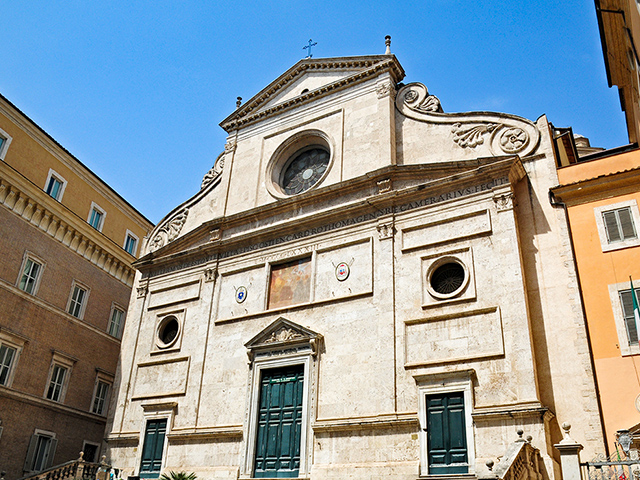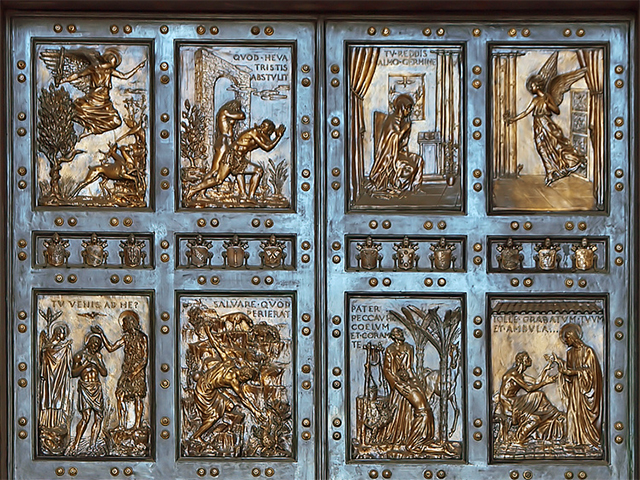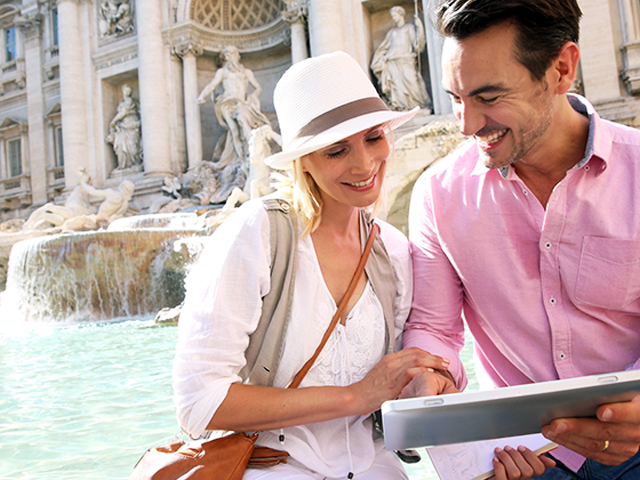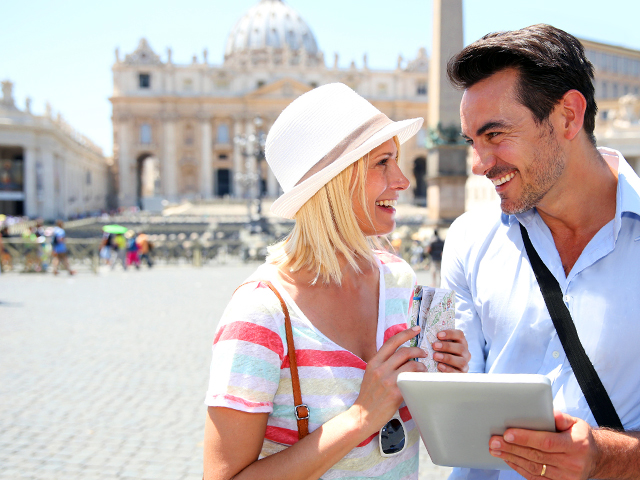How to see Caravaggio in Rome for Free
Santa Maria del Popolo, Sant'Agostino and St. Louis of the French: an itinerary around 3 churches of Rome to see for free 6 masterpieces by CaravaggioLENGTH

3-5 hours
Difficulty

Easy
Budget

Low
Route stops
- The Basilica of Santa Maria del Popolo in Rome
Visiting the Basilica of Santa Maria del Popolo in Rome: opening hours and what to see; Raphael and the Chigi Chapel; Caravaggio and the Cerasi Chapel
- Basilica of Sant'Agostino in Campo Marzio
From the Madonna di Loreto by Caravaggio to the Madonna del Parto by Sansovino: visiting hours and what to see in the Basilica of Sant'Agostino in Rome
- Visiting the Church of St. Louis of the French in Rome
Visiting the Church of St. Louis of the French in Rome: visiting hours, how to get there, ticket prices, Baroque art, Caravaggio, the Contarelli Chapel and other useful information
Visiting the Basilica of Santa Maria del Popolo in Rome: opening hours and what to see; Raphael and the Chigi Chapel; Caravaggio and the Cerasi Chapel
From the Madonna di Loreto by Caravaggio to the Madonna del Parto by Sansovino: visiting hours and what to see in the Basilica of Sant'Agostino in Rome
Visiting the Church of St. Louis of the French in Rome: visiting hours, how to get there, ticket prices, Baroque art, Caravaggio, the Contarelli Chapel and other useful information
Michelangelo Merisi, known by all as Caravaggio, is beyond doubt one of the most important Italian artists. His troubled life was his main inspiration source for some of his most famous works, Most of them are in Rome, housed in important churches and museums.
But what not everybody knows is that at least 6 of these works can be seen for free!
If you love art, then, don't miss this fantastic route that will take you around the streets of the historic center of Rome amidst the masterpieces of this great artist.
Follow us and you won't regret it!
STOPS OF THE ITINERARY
During this itinerary you will visit 3 church, inside which are 6 artworks by Caravaggio.
But not only churches, also big squares: our itinerary, in fact, starts at the great Piazza del Popolo to get at the end to one of the most beautiful squares in the world: Piazza Navona.
In addition, all these works were particularly thought and painted by Caravaggio for the exact place where they are still nowadays: a fact that will make your visit even more thrilling and that will make you identify completely with the atmosphere of the time.
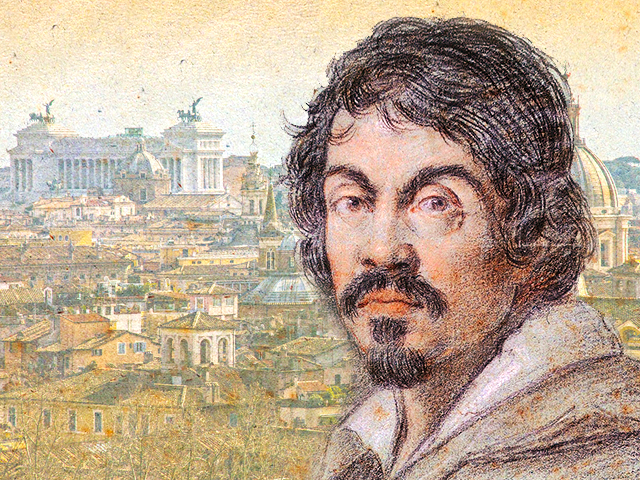
Seeing Caravaggio in Rome for free
1. BASILICA OF SANTA MARIA DEL POPOLO
Once you are at the great Piazza del Popolo we can start our trip into the art of the great Michelangelo Merisi!
The first stop of this itineray is the Basilica of Santa Maria del Popolo and, more precisely, the Cerasi Chapel where are 2 unmissable works:
1. Crucifixion of St. Peter
2. Conversion on the Way to Damascus
The two paintings, commissioned to Caravaggio in September 1600 by cardinal Tiberio Cerasi, at that time treasurer of Pope Clemens VIII, have an extraordinary expressive strenght and introduce a series of innovative stylistic solutions in the style of the Lombard painter.

Caravaggio - Crucifixion of St. Peter
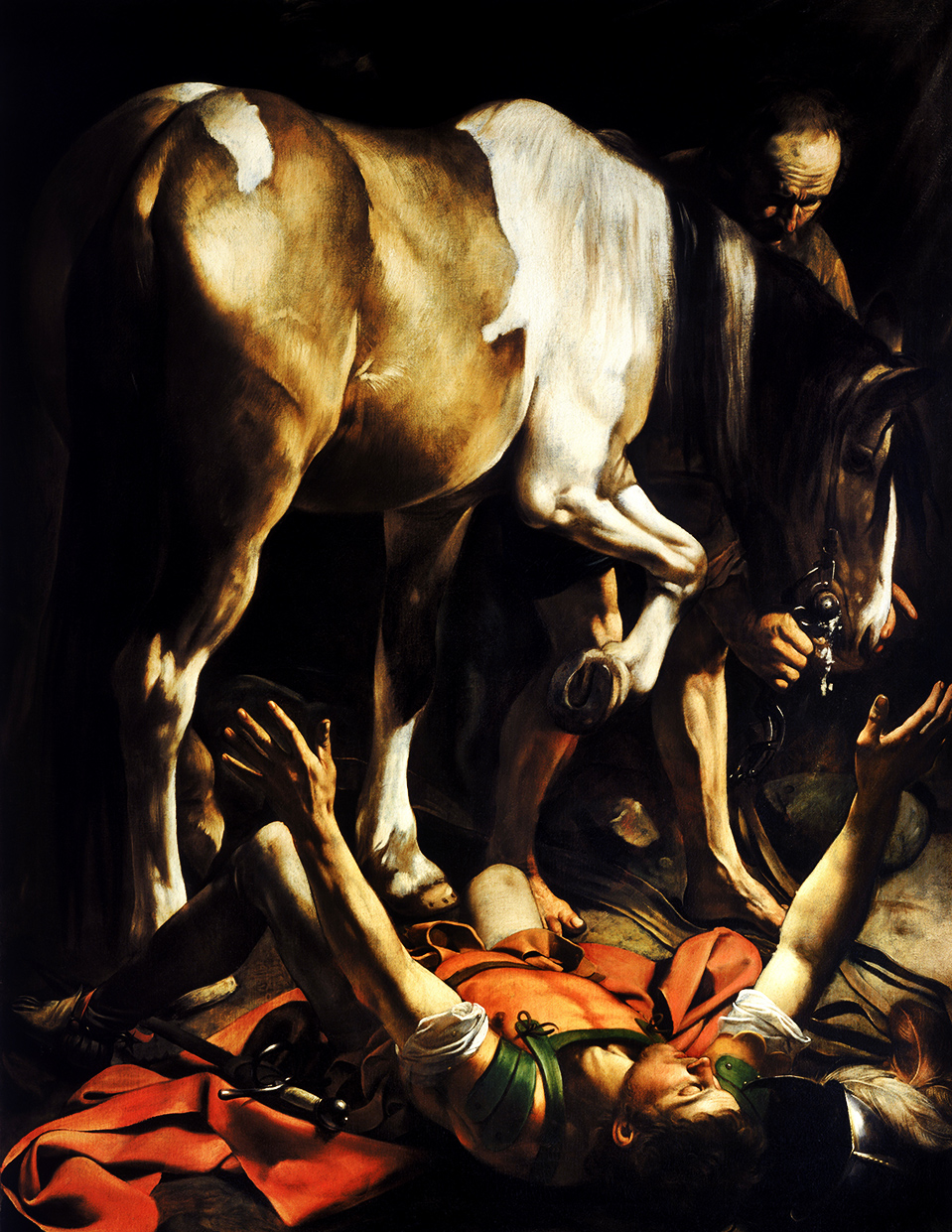
Caravaggio - Conversion on the Way to Damascus
Caravaggio enhances the pictorical description of the matter and light. But, especially, what surprises the most is the humanity of the characters represented, not only the humainity of the saints: there is no heroism or trasfiguration, but a life scene described with a tragical realism.
In particular, in the Conversion on the Way to Damascus, the horse fills a space much bigger than the space filled by the Saint and the episode, instead of developing on open air, as tradition wants, it takes place in a dark stable.
The realism is so intense that scholars theorise that Caravaggio used some models. Both paintings were started in 1600 and ended in 1601.
2. BASILICA OF SANT'AGOSTINO IN ROME
To reach the second stop of this itinerary, from Piazza del Popolo you'll only have to enter Via di Ripetta, historic street in the Campo Marzio neighbourhood. During this pleasant walk of about 1 km you'll find important monuments and buildings like the School of Fine Arts, the Museumm of the Ara Pacis and the Church of San Rocco.
Continue for some meters along Via della Scrofa and then turn right into Via di Sant'Agostino... you have arrived!
The Basilica of Sant’Agostino in Campo Marzio is one of the first Renaissance Roman churches. It houses many priceless works like a masterpiece by Caravaggio:
3. Madonna di Loreto (Virgin of the Pilgrims)
It is one of the most famous paintings by Caravaggio, which the artist donated to the church as a thanking gesture. In fact, it is said that the tormented painter, in order to avoid being murdered by the father of a girl he had seduced, he found shelter in the basilica.
According to many, the Holy Virgin would have been portrayed with the features of his lover.
Also in this painting stands out the extreme search of realism by Caravaggio, who portrays Virgin Mary like a countryside woman in front of two poor pilgrims, dirty and wearing worn-out clothes.
Commissioned by Orinzia Cavalletti, widow of the Bolognese notary Ermete Cavalletti, Caravaggio painted this work between 1603 and 1606, at the top of his success.
To learn more about the history of the church and to have most information about what to see click here.
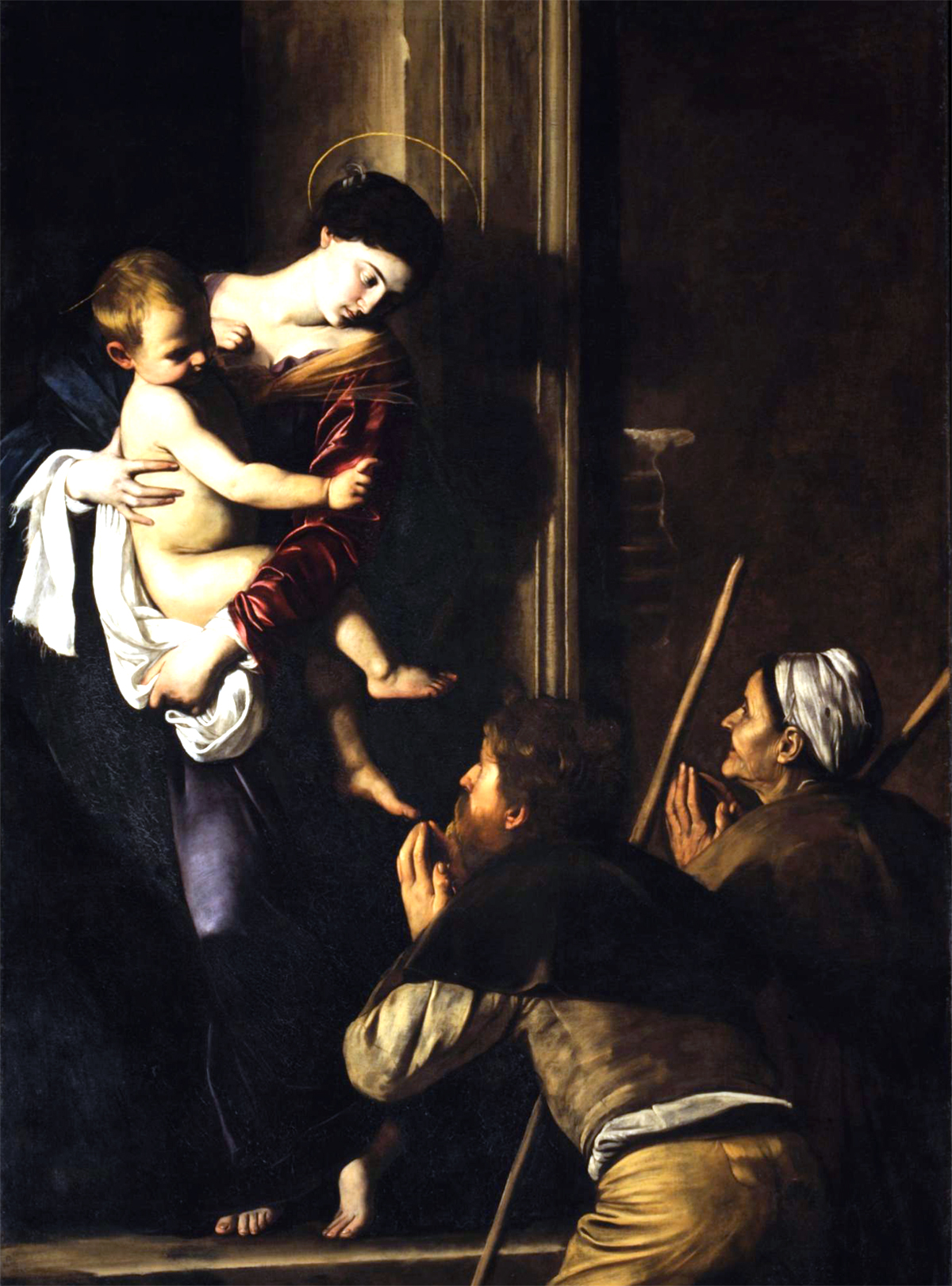
Caravaggio - Madonna di Loreto
3. THE CHURCH OF SAINT LOUIS OF THE FRENCH
The third and last stop of this itinerary is less than 200 meters away. To get there, you will only have to walk Via della Scrofa and turn right into Via del Salvatore.
Here, enclosed between the Pantheon and Piazza Navona, is the small Church of St. Louis of the French, a true pearl of Baroque art, which houses important art works like the 3 absolute masterpieces by Caravaggio:
4. The Martyrdom of Saint Matthew
5. The Calling of Saint Matthew
6. Saint Matthew and the Angel
The works, inside the Contarelli Chapel, represent a narrative cycle linked to the figure of St Matthew. Michelangelo received the Commission in 1599 and started working immediately, by painting the Martyrdom of St Matthew, which he ended the following year, and the Calling of St Matthew. St Matthew and the Angel, instead, was painted in 1602.
The Martyrdom of St Matthew, compared to other works, is more crowded with a tangle of bodies that refers to the Mannerism while the nudes are clearly inspired by Michelangelo's works.
In the scene the Holy is overwhelmed by an Ethiopian soldier sent by King Hirtacus to prevent him to continue his work of proselytism while an angel leans out of a cloud to offer him his hand, the symbol of martyrdom.
The crowd around attends horrified and among people stands man with a beard and moustache which could be the same Caravaggio.
It is worth noting that the entire scene is wound by the dark: from this moment Caravaggio will always use the dark background for his works.

Caravaggio - The Martyrdom of St Matthew
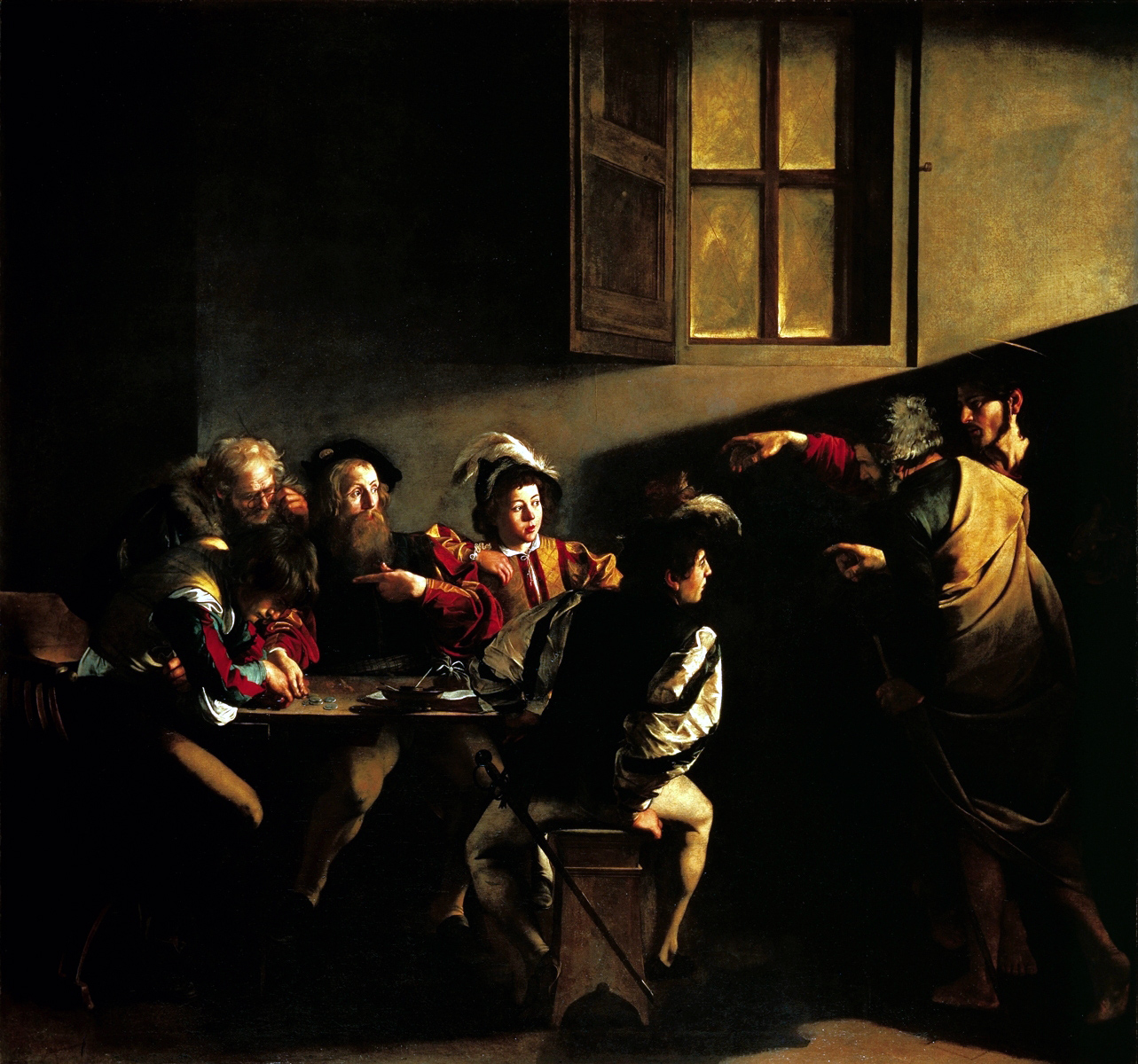
Caravaggio - The Calling of St Matthew
In the Calling of Saint Matthew, the main attention is represented by the symbolism of the beam of light that comes from a hidden window. It is the light that God, which, together with the figures of Jesus and Saint Peter turns toward Saint Matthew.
At the time of the calling by Jesus, Matthew was a tax collector and meeting Jesus leads him to abandon his life for him. Caravaggio transforms this episode in a scene of his time with the environment that resembles a tavern in the Rome of those years.
His painting acquires a character increasingly dramatic, made of lights and especially shadows; a gritty realism that reminds us that the sacred does not have a location distant in time and space, but it is always present among us.
The first version of St Matthew and the Angel was rejected due to its excessive realism.
St Matthew is represented with the appearance of an almost illiterate country man, to whom the angel must direct his hand to help him write. Of this work, lost in Berlin during the second world war, only remain some photographic copies.
In the second version of the painting, instead, Matthew is always shown composing his Gospel with the angel providing some tips.
The Saint is bare feet, almost to depict the trivial humanity of man that is also capable of being an instrument of the divine Word.
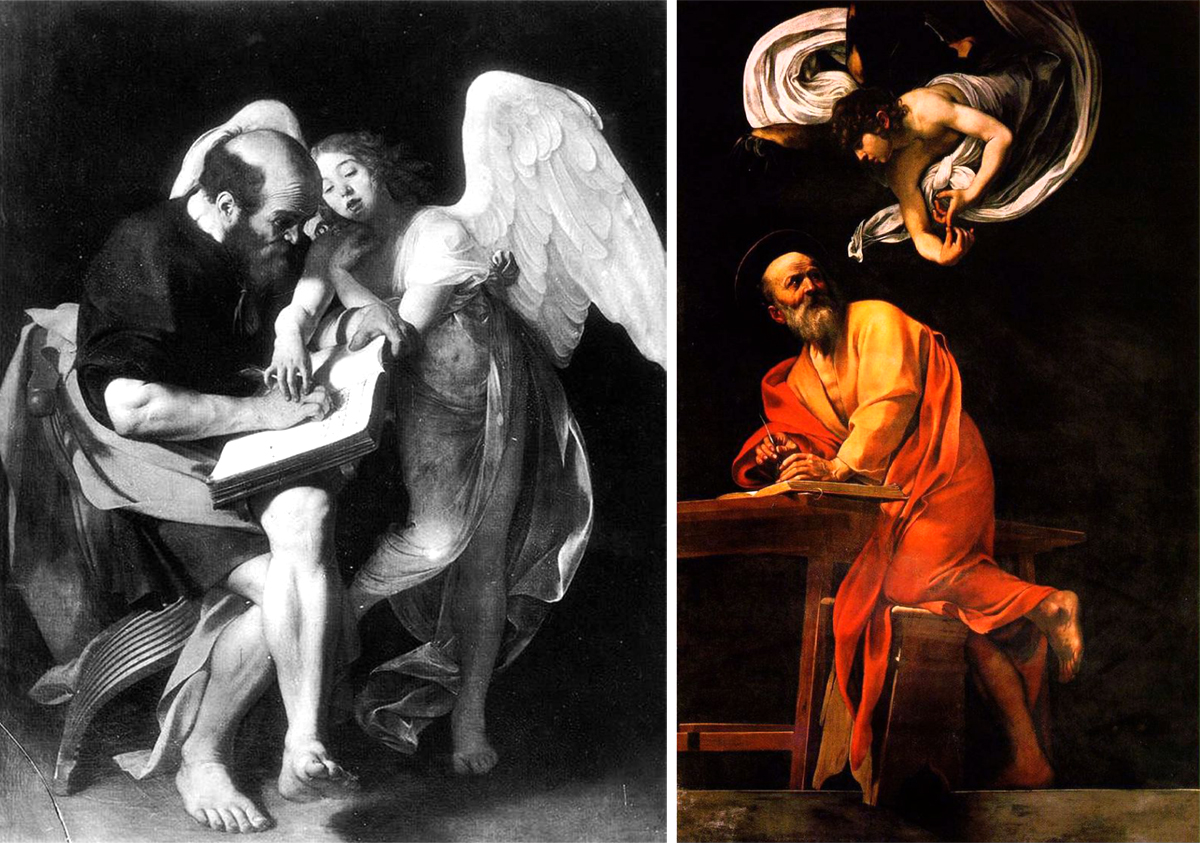
Caravaggio - San Matthew and the angel, the two versions compared
Being accurate, we must say that, to admire the triptych in all its splendour it is necessary to insert a 1 euro coin into a box in order to turn the lights on.
Clearly a ridiculous price to enjoy such a unique scene!
This itinerary about the great Caravaggio ends here, but if you are willing you can read the articles about the churches to discover other important works to see or conclude your day visiting Piazza Navona.
Enjoy your trip!
> BASILICA OF SANTA MARIA DEL POPOLO
> BASILICA OF SANT'AGOSTINO IN CAMPO MARZIO
> THE CHURCH OF ST.LOUIS OF THE FRENCH



 PORT MOBILITY CIVITAVECCHIA
PORT MOBILITY CIVITAVECCHIA










